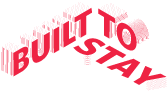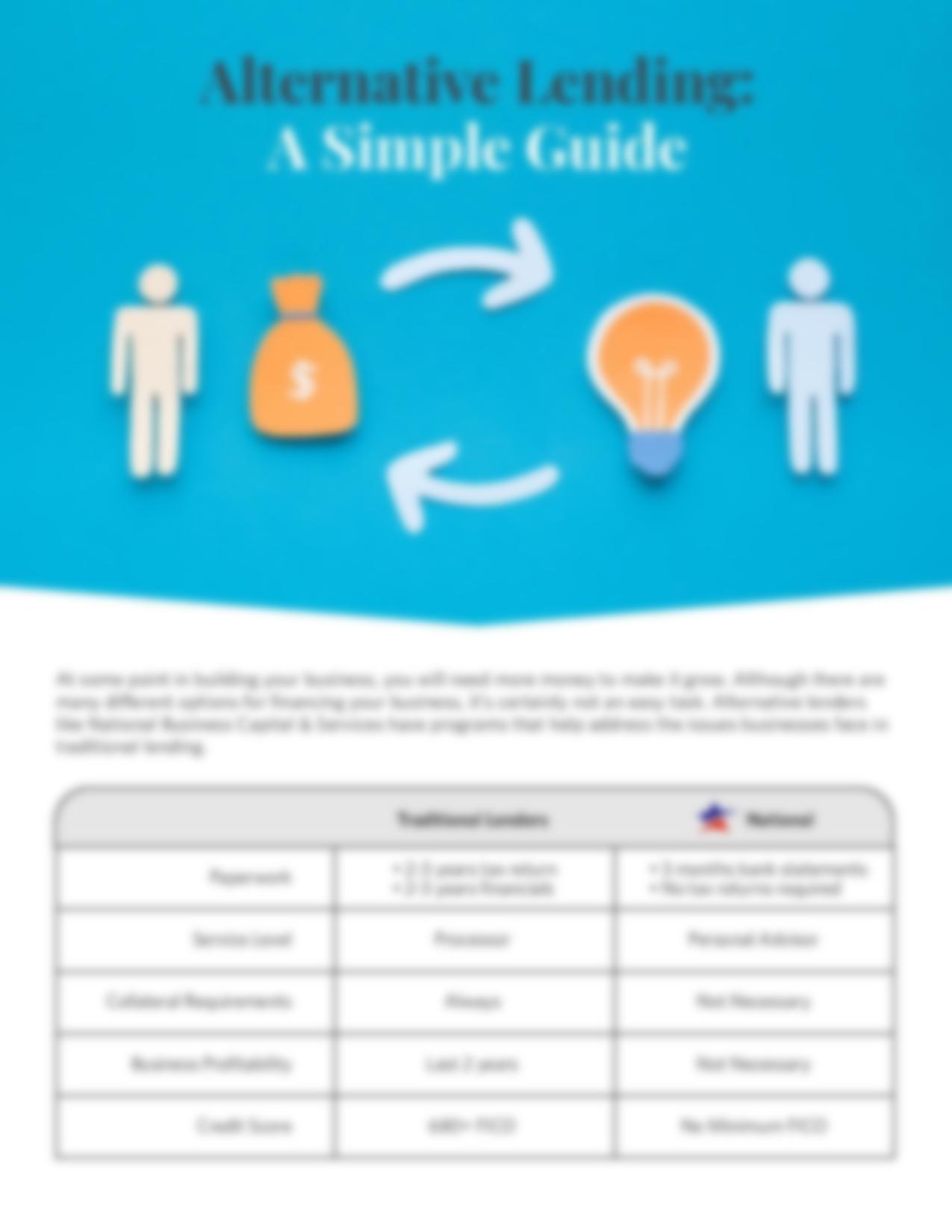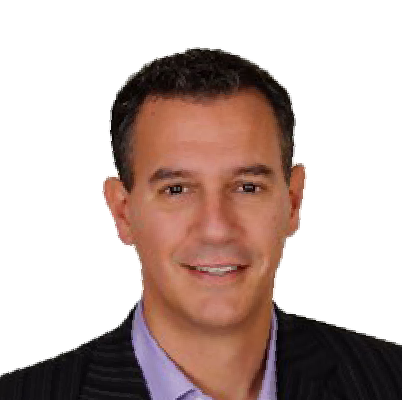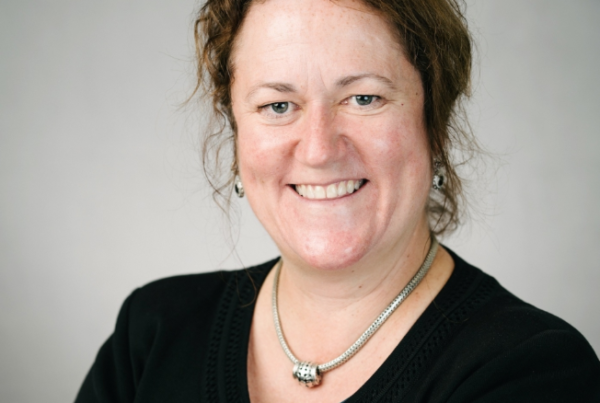Podcast Transcript
Bart: Joe, it’s a pleasure to have you here today.
Joe: Thanks for having me here, Bart.
Bart: As you know, Built to Stay is about creating businesses that are around for the long haul. You started your business from a spare bedroom, and in the past 10 years, in the process of growing your own business, you’ve secured more than a billion dollars in funding for thousands of small businesses, which is awesome. But before we talk about where you are now, Joe, tell us a bit about how you got started.
Joe: Yeah. Well, I must say it was a nice spare bedroom. I just want to throw that in there. I was in a different industry prior to this. It was around financial and mortgages. I had a client base of a lot of self-employed customers. I just saw that it was such a challenge for them to get financing through traditional sources. I didn’t really understand why it was so difficult, and some of those clients started asking me if I could help them get financing. Long story short, I started going to some different banks and they laughed at me like, “Hey, we’ll never get a restaurant done or a contractor. Or this transportation company just doesn’t show enough profit or they already have too much. They already have a loan out that that is using up all their collateral or blanket covering their assets.”
Joe: Some of those banks pointed me to some different private lenders, and I found that there was this whole world of private lending. Some of these private lending companies are publicly traded or very large institutions, but they get most of their business from various different referral sources, don’t really market to small businesses directly. But there was this whole world out there of small business lending which most small business owners really didn’t know about. What could be challenging as a business owner, even if you go to one of those lenders directly which a lot of them aren’t set up for, but even if they are, they all have different guidelines and industries that they like and credit profiles and terms. So it can be very fatiguing and challenging. I saw how frustrating that can be for a business owner. It was very frustrating for me in the beginning trying to build these relationships and bring all these lenders together and understand who likes which type of deals in which type of businesses.
Joe: There’s a lot of trial and error. Basically what we did over the years now is we slowly built this platform of all these vetted out lenders. Now our platform has about 75 different lenders on it, besides finding the right lender, because that’s probably one of the most important pieces and getting the best program for your business. One lender can approve you for 100,000. Another lender can approve you for 250,000 and the terms can be twice as long to repay it and the rates even better. So there’s these huge gaps. Besides finding a lender, it’s confirming that you have the best terms, and then on top of that, the paperwork, applying, and everything else just can be so frustrating and challenging. A lot of lending institutions even still today use paper applications that you have to print, fill out, scan back, and re-send.
Joe: It’s just a slow, slow-moving process. We recognize that was such a challenge as well too. Basically we digitized the whole application process. We focused on technology along with good people. And now our systems are direct-connected to a lot of lenders underwriting and literally you can apply digitally. We can connect to your financial information, pull it all right in, so you don’t have to run around uploading stuff. And then we connect right to lenders that will match and make sense for your business and can get you an offer in literally minutes, hours, to a day or two depending on the transaction.
Bart: How long did it take you to pull all this together and actually make a business out of it?
Joe: It’s such an interesting question. You get started in business and you think, “Hey. In a year, I’ll be in a great place.” And then you get started and you’re like, “Oh my God. A year has flew by,” and you feel like you’ve made no progress. You have setbacks and you deal with unexpected challenges. What you think is going to be great winds up not being. So there’s a lot of trial and error, but it really all started to come together, I would say, years six and seven is where things really started to come together.
Bart: I love to hear that. I don’t love to hear it because, Joe, you were struggling for many years. What I love to hear about that is that you kept going and you say a lot of trial and error. We’ve talked so far up on this podcast about how short-term failure is our friend. Long-term failure is to be avoided. Short-term failure is a friend because basically you want to quickly figure out what doesn’t work so you can get closer to what does work. It sounds like from the get-go you had an idea and your eyes were opened to this private lending world. You saw that it was complex, and where there’s complexity, there’s an opportunity to simplify. But it sounds like it took a while to really make this into a humming, streamlined business.
Joe: Absolutely. I mean year seven is where things really came together. And then year 10 is where things really started to take off and just a different type of level of teams and management executive teams. That’s been really cool to see.
Bart: Do you mind if I ask, how did you get by for those first five or six years when it was a big struggle?
Joe: I’ve been able to build this company. Me and my business partner, we did it without raising any private equity, which in today’s landscape, I mean everyone’s raising private equity. It’s easy to get money. We took a different path. How did I do it? Just relentless commitment and constantly reinvesting back into the business and putting the business first over my personal life, whether it was time or financial, and really staying the course and making a lot of sacrifices. All good things aren’t going to happen overnight and I was willing to make that sacrifice. Some people are, some people aren’t. I think you get into business in the beginning because you think it’s going to be great to work for yourself. And then you realize, oh my God. You’re working 100 times harder than you ever worked.
Joe: There is a means to an end and things can get easier and better. But there’s this huge upfront sacrifice that you have to be willing to take and at the same time you got to be focusing on the right people and building teams and releasing responsibility on top of . . . What really helped us was surrounding ourselves with really good business owners and business leaders and seeking out really great advice from people who had proven success and then taking that and implementing it into the business. But one of the key areas was focusing on processes and structure. If we didn’t focus on process and structure and building that out, we would absolutely not be here today.
Joe: You can get to a certain point, whether it’s revenue size or employee size or a combination of both, but once you start getting to 10, 15, then 20 employees and start breaking a million or $2 million a year in sales and beyond, if you don’t start putting structure and processes in place and then people in place, you’ll never really be able to break out of that ceiling. It becomes a hamster wheel and will also just become . . . literally just suck the life out of you. I wish that I would have focused on processes and structure and people early on and released responsibilities early on. Knowing what I know now, I would have did things a lot differently, but you only know what you know until you know it, right?
Bart: Yeah. Yeah. No, that’s really smart. I actually want to come back to that, but before I do . . . So you didn’t take investment. You didn’t take private equity investment. Did you borrow money?
Joe: Yeah. At times we absolutely did. I think one of the other biggest things is cash flow when growing any business. At times we borrowed money and that’s really important, and building those financing relationships is super important. There’s such a negative connotation of borrowing money. I think a lot of people think, “If I’m borrowing money, that’s a bad thing or-“
Bart: Really bad or scary, right?
Joe: Yeah. And the reality is, is we just always focused on the opportunity. By focusing on the opportunity, the cost of the money was really irrelevant. It was a heck of a lot cheaper than raising private equity. I can say too, hey, every business is different. So what my strategy and what worked for me may not work for you. I’m not knocking private equity. But if you created an app and you need to raise a ridiculous amount of money, you might not be able to go and borrow that money. So private equity might make the most sense. It depends on where you’re at in your business and what direction you’re trying to do. That’s really important. But most typical small businesses, there’s financing available, and using financing can usually be better than raising private equity. But it really depends. If private equity is coming along with strategic partners or advisors that can bring a lot of other stuff to the table, then that can be great avenue. So I definitely don’t want to knock private equity.
Bart: Yeah, absolutely. There’s pros and cons and different reasons you would do either. Tell us a little bit more about that. Why do startups and small businesses borrow money instead of, for example, raising private equity?
Joe: I mean you would borrow money so you don’t have to sell off equity. But I mean the reason why anyone would want to either borrow money or bring in private equity is because there’s an opportunity to grow. In the beginning, most of your profits are getting reinvested to grow the business. Most businesses aren’t generating so much excess profit that they can just fuel the growth of the company on that profit. So you’re going to hit the ceiling–
Bart: Right. Or it’s slow.
Joe: Yeah. Yeah. Or it could be a slow period, especially now in this great economy that we’re in. Most people are borrowing money because they can only handle doing so much business and then their cash flow can only support that. So unable to get to that next level, they’ve got to borrow and bring money in so they can take on additional jobs or hire people to do more work and handle that more work and lay out the salaries for that. Most people when they’re looking to borrow money, it’s because there’s some sort of a growth opportunity and they need to be able to support that cash flow until the business revenue and profits can catch up with the investment that they’re about to lay out for it.
Bart: Are there specific categories that are easy to name? Like most companies use it for advertising or marketing or for buying new equipment or–
Joe: It’s across the board. I mean you hit the nail on the head with all those. I mean it could be marketing, advertising. It could be for additional equipment. We do a ton of equipment purchases for folks. It could be staffing up and laying out payroll. It could be to purchase a second location and the build out for that location. It could be to stock up on inventory and take advantage of deals and discounts. So really it’s across the board. I mean every business is different, but for the most part it’s probably those five or six main categories that I just mentioned.
Bart: Do you have any stories of some of your favorite borrowers over the years, who they were? Why did they come to National? What National does and has been able to help people with?
Joe: Yeah, I mean absolutely. I mean we have so many of those stories. We’re helping small businesses which have employees in communities and it’s really cool. When I stop and actually really think about it, it’s really rewarding. There’s a local business owner that started with one salon and moved on to having a second location, I think is even considering a third now, but has realized how to utilize financing to invest in the right type of marketing that’s been able to attract customers into her salon and her business and been able to retain those customers and been able to grow through utilizing financing and the right type of marketing strategy. She’s just rocking and rolling. She’s providing value to the customers and she’s built a really amazing business.
Bart: Did she figure out that marketing strategy before she got the financing to scale it?
Joe: The first time around she used it to really update and reinvest back into the salon and make it look amazing inside. And then she did some marketing testing, figured out what worked well, and then just doubled down on it and really just grew her business through the roof and then moved that into a second location. We helped finance the second location. It was a really great success story. She’s a really, really hard worker and really passionate about what she does.
Bart: Why did she come to National versus a bank or a traditional lender?
Joe: A lot of typical businesses don’t have a ton of collateral. So most businesses lease the location that they’re in. They don’t own the real estate. When you go to a bank nowadays you might be able to get approved for 50,000 bucks. It’s a ridiculously long process. If you don’t have real estate collateral to cover what you’re taking out which, again, most small businesses don’t. They lease the location. They need to show a ridiculous profit and most people aren’t showing this. There’s a saying, a bank will usually lend an umbrella to you when the sun is shining. So a lot of people don’t cover what a bank would feel is a safe bet. It was much easier to come to us and get approved very quickly so she can just focus on growing her business and not going through a three- or four-month process with the bank to get to a no.
Bart: That is cool. Would you say that people come too early or too late for financing? Are they waiting too long because they’re scared or are people just too early saying, “Hey, I need money to grow this,” and they haven’t actually done the work that you need to make that effective?
Joe: That’s a good question, Bart. It’s probably a combination of all. A lot of times in business as a business owner you’re rocking and rolling and then either an opportunity smacks you in the face and you need money yesterday, which we deal with that all the time. That’s fine because we move and work fast. We’ve streamlined the process. It’s so efficient that we can move really as quickly as you’d like us to. And then sometimes a challenge pops up unfortunately that you weren’t really expecting, so again, you need money yesterday. There is a lot of that. But then there’s a lot of folks that are looking to expand and looking to explore their options, which I think is great. Maybe it’s to purchase a second location.
Joe: Maybe they’d like to buy more trucks to do more. Maybe they’re in construction and can take on more. They just want to see what’s available so they can map it all out. So it really just depends on the situation. Every business and everyone’s different. Everyone has different opportunities and challenges and timings for that.
Bart: What are some of the pitfalls? What are some of the risks for our builders if they’re thinking about taking out a loan? What are some of the reasons they might want to avoid it, or some of the things they need to prepare so that they are in the right situation to be able to get the funding they need?
Joe: Yeah, another good question. No matter what you do, everything you do in your business every single day is a risk. As a business owner, you’re constantly taking on risk and that’s part of the package. If you’re going to be taking out financing, you want to have some sort of a plan and a strategy. If you’re going to utilize financing, you want to use it for things that are going to bring in additional sales and revenue, which ultimately you want to equal to be more profit. So the best advice I can give is that if you’re looking to take out financing, listen, there’s always a slow season or a slow spell or a change in the economy where, you know what? I need financing to get from A to B or to get through this tough time, and I know if I get through this, I’ll be right back on track. That just is what it is.
Joe: For the most part, if you’re going to take out financing, you want to be putting it towards things that are going to grow your business. When I say grow, it’s not just grow head count, it’s grow your revenues and then ultimately your profit. There’s no blanket strategy that I can share with you for this because every business and every opportunity is different. Even two of the same businesses in the same industry still have different things that they’re working on. So just mapping out a plan of how you’re going to execute and use that financing to drive revenue.
Bart: I think that’s a really helpful lens because it can be tempting to take out financing for all sorts of things. But if you focus it in on, hey, I figured out something that will help me grow and help me grow my revenue, then it’s a good bet for the lender too. The lender says, “This business will be able to turn around, pay back that loan, and we’ll be doing our job and providing the capital for that.”
Joe: Absolutely. I have a saying, focus on the money, especially when you’re just getting started. Money is your lifeline. Money’s your blood. You’ve got to focus on the money in the beginning because you’ve got to generate revenues and cash flow in order to get to that next level and to keep your business going. So it’s extremely, extremely important. It’s not all about money, but in the beginning, if there’s not money, if there’s not cash flow there, you’re out of business. So you really got to focus on that.
Bart: Are there red flags that you look for when evaluating a loan?
Joe: There’s a number of different red flags. One of the more important ones that we’re always looking for is to make sure that it’s not fraudulent. Unfortunately, in every type of financial industry, there’s always a level of fraud that happens. So we’re always on the lookout to ensure that it’s the business owner or real business. That’s really important. And then from there, there’s just a number of different things that would go in through the underwriting model that underwriters would really look out for. The biggest thing that they want to see is they’ll look past the profit and loss on your tax return to your P&L, but they’re going to look at your very current and very recent cash flow and literally dial in to see what’s going on in your bank statements and to ensure really that what they’re lending to you your cash flow can support.
Bart: Yeah. That makes sense. The main thing is can you pay this back over the loan period?
Joe: Absolutely. Yep. Always the most important.
Bart: What’s your best advice, as an entrepreneur, for our listeners to help them build their businesses for long-term success?
Joe: The best advice that I could give you is your mindset and focus on the opportunity, focusing on my mindset and having a powerful, positive mindset. Your mindset is everything, I think, in your personal life and in business, and if you’re not in the right mindset and not in that positive place, you’re going to make bad decisions. You definitely won’t have the energy and focus to break through to those next levels. In every single challenge there’s always opportunity. You just have to find it. So always focus on the opportunity. If it was easy, everybody would do it. Your job is, as a business owner, to bring convenience and solutions and value to your customers. Always focusing on that and we continue to do that.
Joe: And then just to add to all that is things are changing at a rapid pace now. There’s no set it and forget it in business. You’re always going to have to constantly be improving and changing with the times, whether it’s technology, whether it’s the products or services that you’re delivering or selling. It definitely can get easier, and if you continue to put the right people in place . . . But you’re going to have to have the right people in place if you’re going to continue to do that and innovate and change with the times.
Bart: Are you saying that even after we put all that time and effort into creating the right systems and processes, we’re going to have to adapt and adjust them?
Joe: That’s right. And improve them and change them. It’s a never-ending job. It’s the never-ending project. That’s something that I really had to learn because I always thought when I got to this point that it would be all good. I think that so many people think that as well too. That in itself, just thinking that way can be so tiring and stressful and frustrating. So once I shifted my mindset and changed the way I looked at things, it made it less stressful because you almost feel like, what am I doing wrong? It should just be all done now.
Bart: Yeah. I’ve been doing this for 10 years. Why haven’t I figured this out yet?
Joe: Yep. You got to fall in love with that process and with the opportunity and let that fuel you. Otherwise, if you focused on all the challenges and the negatives, it’ll just suck the life in you. And I think that’s where a lot of people throw the towel and walk away.
Bart: Yeah. I love the advice for positive mindset and adaptability. So final question, what’s next for National? Where are you guys going from here? You’ve done a billion dollars for your small businesses in funding. What’s next?
Joe: Really, what’s next for us is just continue to improve and deliver value to small business owners. Besides the financing, we also offer a number of business services that businesses need to improve their operations, streamline operations, and then also bring in more revenue, things from payment processing to payroll to insurance, to marketing services, to bookkeeping services. We do a number of those services and really our mission is innovating the way entrepreneurs grow. Our mission now is to really bring more and more value to our small business owners, whether it’s through education, whether it’s through services, whether it’s through recommendations, and really everything around helping them build a better business and become a better business owner, a better leader. That’s really our mission now.
Joe: It’s really, really exciting and we’ve been really focused on this. The feedback that we’re getting from our customers, it’s really amazing. It also feels really good to help others get to that next level because, as I mentioned in the beginning, it’s not easy running a business. There’s not really a resource out there to go to that you can get really all of that in one place, where there’s real proven success behind it.
Bart: Yeah, I love it. Joe, thanks so much for joining us today.
Joe: My pleasure, Bart.
Bart: Check out Grow By Joe on YouTube and his company website, nationa.biz, national.biz. Joe is constantly putting out great content and is there to answer your business financing questions. Links to all of these sites, show notes, and downloadable content are available at builttostay.com.




